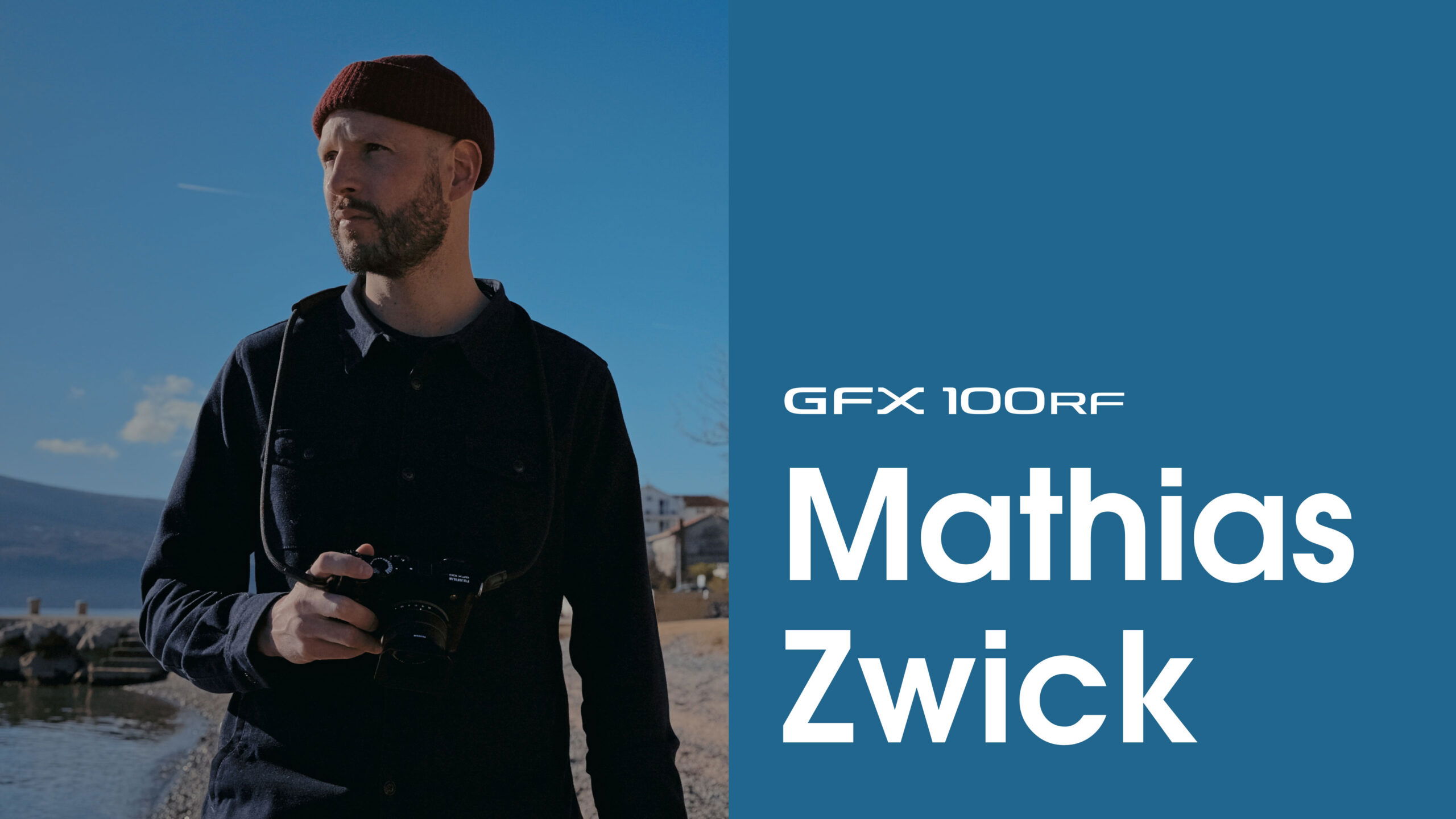
Mathias Zwick – Fujifilm GFX100RF – The Silent Shore
The Adriatic in winter offers a completely different image from the summer postcards. The beaches are deserted, the seaside resorts plunged into silence, and the landscapes, often brimming with life, fall into slumber. It is in this frozen setting—where the scars of overactive summers meet the stillness of winter—that I chose to explore the relationship between humans and the sea.

As a documentary photographer, I am interested in how places shape human stories and reveal often invisible tensions. My journey has taken me to diverse realities: skaters defying norms in Iran, rock musicians in Kosovo united by their passion for music despite divisions, and the social implications of the citizen scoring system in China. In all these projects, I strive to go beyond mere documentation, creating images that invite reflection and dialogue by blending a documentary approach with an aesthetic dimension, sometimes poetic, sometimes humorous.

With The Silent Shore, my goal was to capture the silent hibernation of the Adriatic landscapes and meet those who continue to live in rhythm with the sea, far from the tourist frenzy. I traveled along the coasts of Albania, Montenegro, and Croatia, stopping in deserted ports, villages where shutters remain closed ten months of the year, and concrete beaches that bear witness to the overconsumption of summer. My images are an attempt to reconcile the visible and the invisible: the scars left by mass tourism and the resilience of locals who still make this coastline their refuge. This series reflects my desire to question how humans and nature coexist in a fragile balance.

To document this journey, I used the new Fujifilm GFX100RF. From the very first use, this camera proved to be perfectly suited to my documentary approach. Compact, lightweight, and discreet, it allowed me to immerse myself in these landscapes without drawing attention. As a photographer who often works on the move, the weight and bulk of equipment are significant constraints. With the GFX, these issues disappear: no overloaded backpacks, just the essentials to fully focus on my subject.

I particularly appreciated the elegant, ergonomic design of the GFX100RF and the ease with which image ratios can be changed. The intuitive dial, which allows you to switch from panoramic to square formats, enabled me to experiment and adapt my compositions to the scene. Another innovation I found particularly useful was the dial for digital zooming. Paired with the 35mmF4 lens, I could easily switch from a 28mm full-frame equivalent to 36mm or 50mm, two focal lengths I use frequently by digital tele conversion feature. This flexibility allowed me to capture both open landscapes and tightly framed details, providing rhythm and diversity essential to my series.

In winter, the Adriatic light gently reveals the textures that summer tends to obscure. Thanks to the extended dynamic range of the GFX100RF, I was able to preserve details in both shadows and highlights, capturing the richness of contrasts in these dormant landscapes. I was also impressed by the variety of Fujifilm’s film simulations. The ability to switch from color to black and white with just a turn of the dial allowed me to quickly test different interpretations of my images before deciding which worked best. For this series, I particularly appreciated the REALA ACE simulation, which offered soft and nuanced tones, ideal for winter landscapes and atmospheres. I also explored the ACROS black-and-white simulation, which excels in rendering details and contrasts. This flexibility allowed me to move seamlessly between color and monochrome, staying true to both my documentary and artistic approach. It helped me create images with a style reminiscent of my analog work.

During my portrait sessions, the GFX100RF’s rangefinder viewfinder provided a direct connection with my subjects. There was no barrier imposed by a bulky camera obscuring my face, allowing me to maintain the intimacy essential to capturing authentic portraits. The camera’s lightweight design, combined with a comfortable and ergonomic strap, allowed me to work for hours without fatigue—whether walking along Durrës beach in Albania or exploring the coastline in Split, Croatia.

The first days of my journey were marked by a deluge: relentless rain and powerful waves. In these challenging conditions, the weather-sealed features of the GFX100RF allowed me to focus entirely on capturing images, free from concern about the equipment. This reliability transformed how I approached these raw and dramatic scenes.

With The Silent Shore, I sought to portray another side of the Adriatic. One that emerges only when the frenzy subsides. A place where locals reclaim their territory, ports grow quiet, and the sea resumes its rhythm. This project is not merely an aesthetic pursuit but also an effort to document the essence of a place and the invisible connections between humans and their environment.

The Fujifilm GFX100RF was a key partner in this endeavor. It allowed me to work freely, travel light, and focus entirely on creating images where every detail matters.


















































